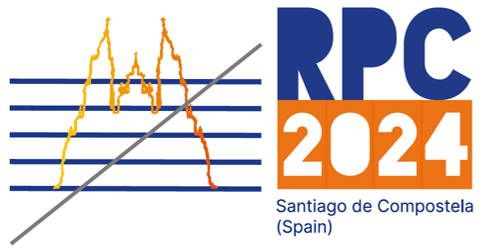Speaker
Description
The standard gas mixture for the Resistive Plate Chambers (RPC), composed of $\rm{C_{2}H_{2}F_{4}}$/i-$\rm{C_{4}H_{10}/SF_{6}}$, allows the detector operation in avalanche mode, as required by the high-luminosity collider experiments. The gas density, the low current and the comfortable avalanche-streamer separation guarantee high detection efficiency, rate capability and slow detector ageing. This gas mixture has a high Global Warming Potential (GWP$\sim$1430) due to the presence of $\rm{C_{2}H_{2}F_{4}}$(GWP$\sim$1450) and $\rm{SF_{6}}$ (GWP$\sim$22400).
The $\rm{C_{2}H_{2}F_{4}}$ and $\rm{SF_{6}}$ are not recommended for industrial uses anymore, thus their availability will be increasingly difficult over time and the search for an alternative gas mixture is then of absolute priority within the RPC community.
Moreover, CERN is pursuing a campaign toward the reduction of these gases, because they represent most of the LHC particle detectors greenhouse gas emission.
There are several studies on going aimed at replacing the $\rm{C_{2}H_{2}F_{4}}$. All these studies require the increase of the $\rm{SF_{6}}$ concentration from 0.3$\%$ (standard gas mixture) to 1$\%$ to achieve an avalanche-streamer separation of 300 V. This means that the GWP of the alternative gas mixtures can not be below $\sim$200 and the increase of $\rm{SF_{6}}$ should be avoided to maintain the GWP at low level. A very promising alternative to the $\rm{SF_{6}}$, the $\rm{C_{3}H_{2}ClF_{3}}$, has been found and is presented in this work. This gas has a GWP$\le$1, paving the way to the possibility to operate the RPC detector with a completely environment friendly gas mixture. The tests of the performance and longevity operating the RPC with this gas are reported. The tests have been performed at the Gamma Irradiation Facility (GIF++) at CERN using a 1 mm gas gap RPC.

